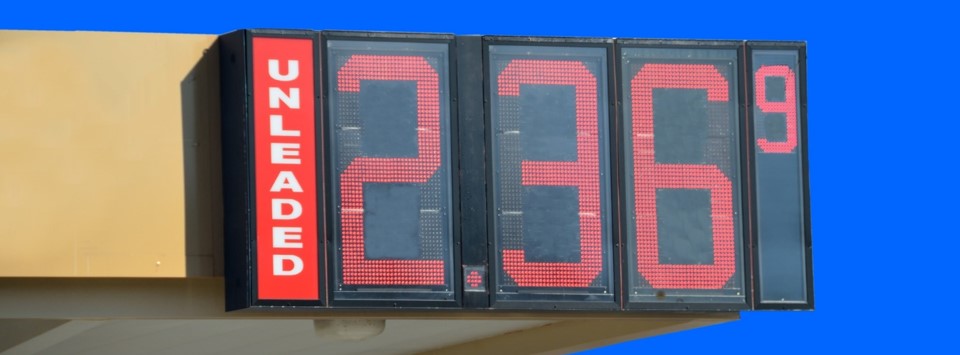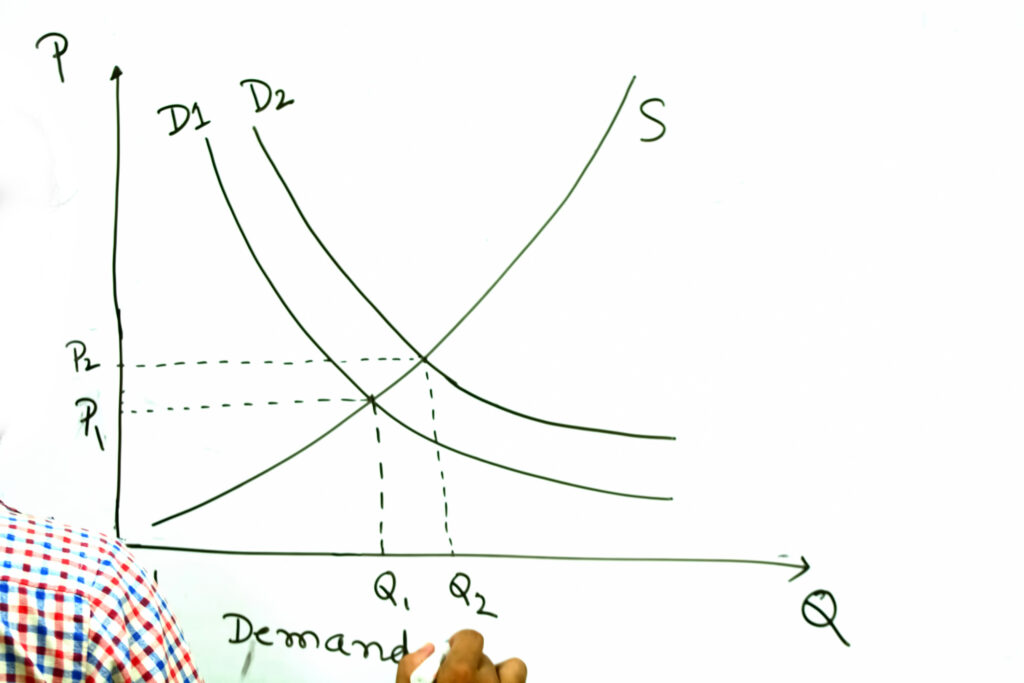
Grades 9-12

Don't have an account yet? Sign up for free
Don't have an account yet? Sign up for free
Students will be able to:

In this economics lesson, students will evaluate how demand and supply affect resource allocation.
Warm-Up
Use the slide presentation to help students understand the concepts. Slide 1. Note: This lesson supports Lesson 1 in Unit 2: Nature and Function of Product Markets in CEE’s Advanced Placement Microeconomics (4th Edition. In addition, this lesson could be used to introduce or reinforce non-price determinants of supply and demand. It might also be used to review or explain a basic understanding of the Circular Flow Model; however, a more thorough presentation would be helpful prior to using this lesson.) Slide 2. Introduce the lesson by asking students if they can think of a good or service that would increase in price when there is an increase in the price of gasoline. Slide 3. Follow up with questions about how the products shown could be affected by increasing gasoline prices and the relationships between price and quantity demanded or quantity supplied. Remind students that resources are scarce which results in a limited number of goods and services available for sale in a marketplace. Therefore, in a market economy, price changes for one good or service affects prices for related goods and services. And those price changes also affect how resources are used. (Suggested responses to Question 1: New tires. If gasoline prices increase buyers may postpone purchases for new tires because of budgetary constraints related to increased transportation expenses. Vacation Cabin Rentals. Owners of cabin rentals are likely to see a decline in revenues as people may travel less. Public transportation. A likely increase in demand for public transport may put upward pressures on quantities demanded and prices to travel via public transportation. Gas Station Food Sales. Revenues from gas station foods and drinks may decrease as gas and gas station refreshments are complementary goods. Question 2. In general, prices have an inverse relationship with quantity demanded (increase P/decrease QD and decrease P/increase QD) and a direct relationship with quantity supplied (increase P/Increase QS and decrease P/decrease QS).)
Modeling
Tell students this lesson will help them understand how changes in quantity demanded and quantity supplied affect the allocation of resources used to produce goods and services. Slide 4. Briefly review the circular flow model, reminding students that it shows the roles of buyers and sellers in both the product and factor markets. The flow of money is similar to a signal showing sellers what buyers want to purchase. Sellers then allocate resources to those goods and services in highest demand. (Note: It would be helpful to have introduced the circular flow model in a previous lesson.) Slide 5. Tell students they will use a recent “real life” event to discuss this concept. Distribute copies of How Changes in Gas Prices Affect Demand and Supply. Explain that the article in this handout illustrates how price changes impact purchasing and production decisions. Have students read the article. Review the article, emphasizing how truck sales increased as gasoline prices fell from 2013-2015. Ask students how this article illustrates the efficient allocation of resources. (U.S. drivers increased their demand for larger, less economical vehicles; auto companies responded by producing more SUVs and trucks to meet their demand. Resources shifted from producing small cars to producing larger vehicles.) Slide 6. Explain that the graph shown here depicts changes in consumer concerns about fuel efficiency. Have students share what they see happening in the graph. (Consumers became less concerned about efficiency as the price of gasoline dropped.) Slide 7. Discuss the questions at the end of the article, having students write down their answers as each question is discussed. Remind students that the price mechanism process explained in this lesson is applicable to a market-based economic system when prices are flexible and transactions are voluntary. Under other circumstances or in other economic systems — such as a command economy, markets will be less reliant on prices. Instead, they will rely on decisions made by a price controlling authority or committee of central planners. Slide 8. Review the summary to be sure students understand the main point. Slide 9. Review the Law of Demand and ask how this situation relates. Remind them that the price of vehicles did not change; it was the price of gasoline that changed, which means something else affected the demand. Slide 10. Use the information in this slide to show students what happened. Tell them the rest of the lesson will focus on non-price factors that influence demand and supply.
Group Activity
Put students into small groups and distribute copies of Demand and Supply Problem-Solving. Slide 11. Use the “IRDL” acronym (pronounced “er-duhl”) to help students recall the movement of demand and supply curves on a graph. Slide 12. Review the non-price determinants of demand. Have students record the determinants of demand on their handouts. Slides 13-16. Show students how the change in prices impacted the demand for related goods. Slide 17. Review the non-price determinants of supply. Have students record the determinants of supply on their handout. Slide 18. Remind students of the differences in quantity demanded/quantity supplied and demand/supply, and the role they play in allocating resources in a market economy. Tell students they should use this information to complete Part B of their handout. After students have completed the assignments, use Slides 19 and 20 to review their answers to the tables on differences between demand/quantity demanded and supply/quantity supplied. (Answers to additional questions: Decrease in the demand for tires, shifting demand curve to the left. Decrease in the quantity demanded, moving to left on the demand curve.)
Individual Activity
Distribute copies of How Markets Allocate Resources to students. Explain the instructions and allow students sufficient time to complete the assignment. Review answers.
Distribute copies of Assessment. You may want to review answers with the class after they have completed the activity.
Activity 1
Have students repeat the activity with gas prices and vehicles using different products. You may want students to find a recent article to use or assign different products to them.
Activity 2
Tell students they need to solve a parking problem at GOTO High School. The school is expecting a new influx of students next year due to a new housing development in the district. The increase in enrollment will increase the demand for parking spaces, however no land is available to expand the current parking area. Have students develop a plan for allocating the limited number of parking places on campus.

Grades 9-12

Grades 6-8, 9-12

Grades 9-12

Grades 9-12
